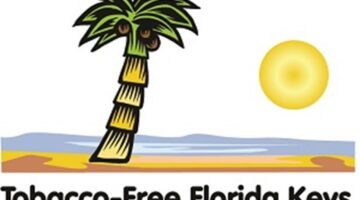Hurricane season kicks off in the Keys
BY PRU SOWERS
KONK LIFE STAFF WRITER
It’s entirely possible that most residents of Monroe County did nothing during Hurricane Preparedness Week, May 15-21. They likely did not prepare an emergency kit or post the location of the nearest storm shelter on their refrigerator.
But it’s not too late. And it’s never too late, according to Irene Toner, director of Monroe County Emergency Management.
“It’s a year-round thing. You can’t think, oh, we haven’t had a hurricane for a few years,” she said. “People do get complacent. But we can’t do that.”
The June 1st start of the 2016 hurricane season – which lasts until Nov. 30 – is a good time to take stock of what you may have to do in the event of a severe storm. First of all, put together an emergency kit with flashlights, batteries, canned food, a first aid kit, battery-operated radio and one gallon of water per day for both humans and pets. Make copies of your important papers such as life and home insurance, deeds, licenses, credit cards, medical prescriptions and pet food. Copy family photos. And don’t forget a manual can opener.
“All of the things you would need to be self-sufficient for 72 hours. If we knock out the power for a few days, what do you need to survive? That’s the basic question,” Toner said.
What happens if the storm is bigger? There are very specific rules that Toner and a large team of county emergency services personnel, including the dedicated weather station in Key West, follow. If the approaching storm is a Category 1 or above, with sustained winds of 74 mph, all tourists and special needs residents in the county are ordered to evacuate. But the general population doesn’t get the order until the storm is a Category 3 or above. The reason for the difference in evacuation orders? To ensure that everybody doesn’t hit the road at the same time.
“The reason is there’s always a threat of an escalating storm. The more people you have in the county, the more difficult it could be to evacuate the county,” Toner said.
If a Category 1 or 2 storm is coming, the county opens its shelters, which are pet friendly. For a Category 3 or above, residents are urged to shelter on the mainland, likely in the Sunshine Pavilion storm shelter near the Miami-Dade Fairgrounds.
The call to evacuate is a hard one, Toner said.
“We really don’t like to do it. But if the call is made, the safety of our residents is at stake,” she said.
An evacuation order doesn’t always mean everyone listens. Toner recalls 2005’s Hurricane Wilma, which socked Key West with two storm surges causing millions of dollars in damages and the loss of about 30 percent of the cars on the island. Toner said that before the storm her office issued a warning for people to move their cars to higher ground, which in an area that is basically at sea level meant evacuate.
“But less than 10 percent of the people evacuated. After that, they had no cars. Thousands and thousands of people had no cars,” she remembers.
Another key element is any resident’s emergency planning should be to take stock of their neighbors. Are there elderly people or neighbors without family in the area? If so, help them out, she said.
“Look out for your neighbor. Look in on them, make sure they have that [emergency] kit, as well. Make the effort to communicate with them that the county is evacuating,” Toner urged.
[livemarket market_name="KONK Life LiveMarket" limit=3 category=“” show_signup=0 show_more=0]








No Comment